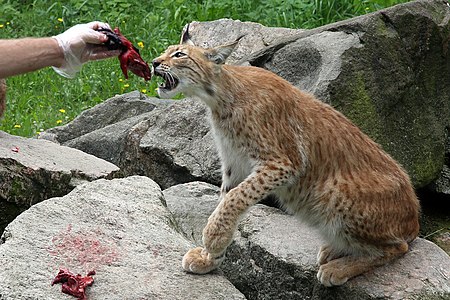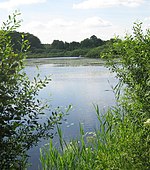Skånes Djurpark
1953 establishments in Sweden20th-century establishments in Skåne CountyBuildings and structures in Skåne CountyTourist attractions in Skåne CountyZoos established in 1953 ... and 1 more
Zoos in Sweden

Skånes Djurpark (English: Scania Zoo) is a Swedish zoological park located in Höör Municipality, Skåne County. It specializes in animals of the Nordic fauna, although orphaned animals from elsewhere in the world are sometimes temporarily housed there until a new home can be found for them. The zoo has about 900 animals, representing almost 100 species. These animals are most often kept in large enclosures with natural environments. Some of the domestic animals displayed include: Skånegås (Scania goose, a type of domestic goose), Gute sheep, Fjäll cattle, and Jämtlandsget (Jämtland goat, a type of domestic goat).
Excerpt from the Wikipedia article Skånes Djurpark (License: CC BY-SA 3.0, Authors, Images).Skånes Djurpark
M 1321, Höörs kommun
Geographical coordinates (GPS) Address Website External links Nearby Places Show on map
Geographical coordinates (GPS)
| Latitude | Longitude |
|---|---|
| N 55.9630984 ° | E 13.5366583 ° |
Address
Skånes djurpark
M 1321 150
243 93 Höörs kommun
Sweden
Open on Google Maps





